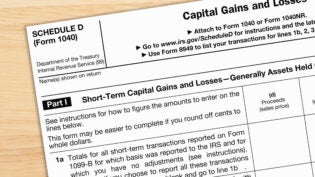What is the Schedule K-1 Tax Form for Businesses?
By: 1800Accountant

According to the U.S. federal tax code, businesses can be arranged as pass-through entities. This designation means that instead of a business being taxed separately at the corporate level, its taxes, deductions, losses, and other activities pass through to the personal tax requirements of its owner(s). Some examples of these business structures include a general partnership and an S corporation.
If you’ve ever heard of a Schedule K-1, there’s a good chance you have a pass-through entity. A Schedule K-1 is a tax form used to report the income amounts passed through to all parties who have some type of financial interest in a business.
K-1 Forms for General Partnerships
If you operate an ice cream stand or tanning salon with your college roommate as a business partnership, all partners must report their business income on their personal tax returns. This includes reporting all business financial activities that are also reported on Form 1065, which is an annual information return for partnerships that must be submitted to the IRS.
In turn, a business partnership is required to complete a Schedule K-1 tax form to report each business partner’s share of these taxes. A K-1 form is provided to both the IRS—along with Form 1065—and to each business partner within the entity, allowing the owners to report this information on their own personal returns.
For instance, let’s say a local seafood restaurant earns $90,000 of taxable income within a given year. There are 3 equal partners in the mom-and-pop business. Each partner would need to receive a K-1 form that indicates $20,000 of income on the document.
K-1 Forms for S Corporations
Businesses structured as S corporations are required to file Form 1120S with the IRS each year. This is also an information return that reports business activities. The S corp must then provide K-1s that are designed to report the income, losses, credits, and deductions of each S corp shareholder. Each shareholder then takes the financial information on the K-1 tax form to report it on his or her personal tax return.
Tying It All Together
All K-1 tax forms are designed to provide specific information regarding the type of business income a shareholder earns, along with info about deductions and losses. This information allows shareholders in partnerships and S corporations to accurately report this business-generated financial data on Form 1040 when filing personal income taxes with Uncle Sam.












